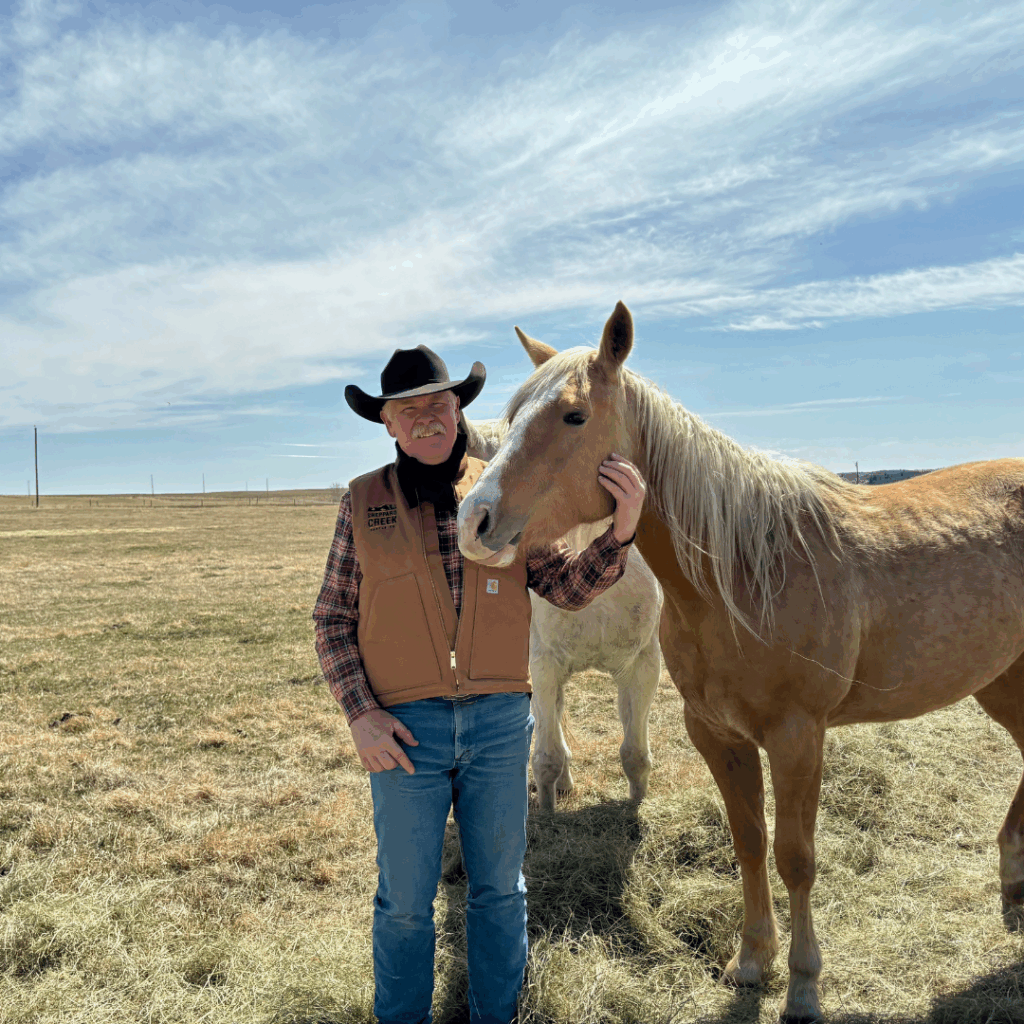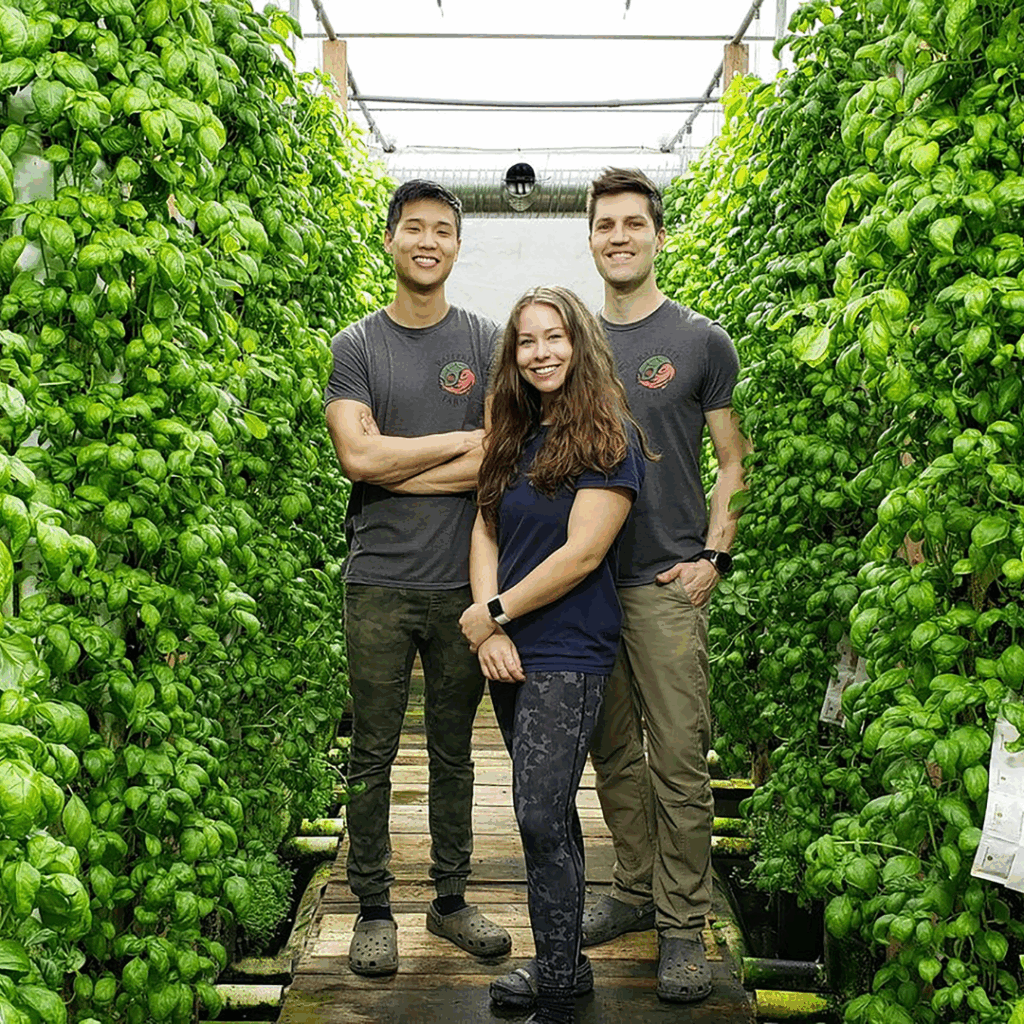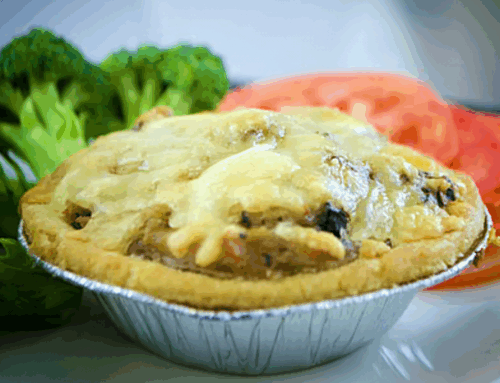
Two Alberta producers share a passion for creating fresh, local food while caring for the land that sustains them.
From open pastures to sunlit greenhouses, their work reflects both tradition and innovation in Alberta’s food scene.
In this edition of Meet the Producers, Erin Jenkins visits two Alberta operations rooted in passion, innovation, and a deep respect for the land.
At Sheppard Creek Cattle Company, Scott and Buffy Van Vliet raise grass-fed, grass-finished Angus beef using regenerative practices that restore the soil and sustain native grasses. Just down the road in spirit, if not in miles, James Rafferty and Nick Hsu of Rafferty Farms have mastered the art of growing fresh basil year-round in their innovative aquaponic greenhouses. From wide-open pastures to temperature-controlled rows of vibrant green, both producers are redefining what it means to raise and grow food in Alberta.
Sheppard Creek Cattle Company
For Scott and Buffy Van Vliet of Sheppard Creek Cattle Company, ranching isn’t just a business — it’s a way of life rooted in stewardship, respect for animals and a deep spiritual connection to the land.

Scott Van Vliet grew up farming near Spruce Grove, Alberta, and earned a degree in animal science from Montana State University. His ranching career took him across both North and South America before returning to Canada in 2003. After meeting Buffy, the two began building their dream of raising cattle sustainably and ethically on their ranch near Nanton. They started small, raising and selling beef in 2012 with their kids, and officially launched the Sheppard Creek brand in 2020, specializing in grass-fed, grass-finished Angus beef.
At Sheppard Creek, cattle are raised without the use of hormones, antibiotics or steroids — even the grass they eat is grown without chemical fertilizers. The herd is moved frequently across pastures in a regenerative system inspired by the natural grazing patterns of buffalo, which helps restore soil health and native grasses.
For Scott, understanding grass is the foundation of good ranching — and he believes that properly managed cattle can heal the land rather than harm it. “Scott doesn’t just love cows,” says Buffy with a smile. “He loves grass.” Drawing on ranching knowledge that dates back to the 1880s, he blends traditional techniques with modern insights into soil health, grazing pressure and ecosystem balance.
Sheppard Creek beef is available by the quarter, half, or whole — fully customizable and dry-aged for 21 days. Buffy walks each buyer through the process, helping them choose the perfect cuts. Their ground beef burgers have become a customer favourite or try slow-cooking a brisket under the coals of last night’s fire. For something really nourishing, simmer up a rich, healthy bone broth (visit their website for a great recipe!).
Each spring, Sheppard Creek welcomes families to “Customer Sundays,” offering a chance to meet the new calves and reconnect with where their food comes from. For Scott and Buffy, ranching carries a deep sense of responsibility and stewardship. They are passionate advocates for the role ranching plays in supporting healthier ecosystems and sustainable food systems — all while producing more nutritious, higher-quality food.
“We see ourselves as caretakers of this land, not owners,” Scott explains. “We’re here for just a moment in time, and our goal is to leave it better than we found it.”
Sheppard Creek Cattle Company | 403.200.3663 | sheppardcreekcattle.ca
Rafferty Farms
What began as an ambitious idea between two city kids in 2015 has grown into one of Alberta’s most innovative greenhouse operations. Rafferty Farms — founded by James Rafferty and Nick Hsu — started with a bold dream: to grow fresh herbs year-round in Alberta’s chilly climate. With the support of Rafferty’s aunt, Jill Jenkins, they built their first greenhouse just south of Okotoks.

Rafferty, a SAIT-trained aircraft maintenance engineer, and Hsu, a professionally trained pastry chef, designed the farm’s growing systems. Aquaponics is at the eart of their operation — a sustainable method that pairs fish farming with plant cultivation. Fish waste provides nutrients for the plants, which in turn purify the water for the fish, creating a closed-loop, eco-friendly system that conserves water and eliminates the need for chemical fertilizers.
“The hardest part was the learning curve — we had no idea what we were doing when we started, but we were determined to make it work,” says Rafferty. By 2018, Rafferty Farms had expanded, building a 7,000-square-foot greenhouse dedicated entirely to basil, a notoriously finicky herb to grow and transport. Today, they supply fresh basil to grocery stores and restaurants across the province. By growing locally and using a temperature-controlled delivery system, they’re able to offer a fresher product with a lower carbon footprint.
Beyond fresh herbs, Rafferty Farms also produces a house-made 8 Ingredient Pesto, available at Safeway, Sobeys and through their distribution partner, Galimax Trading. Basil fans will appreciate the product’s versatility — perfect for tossing into a fresh Caprese sandwich layered with mozzarella, tomatoes and a drizzle of olive oil, or as a finishing touch in salads and pastas.
The Rafferty Farms dream keeps growing with plans underway for a third greenhouse and an ambitious goal to cultivate over 300,000 basil plants. “We all end up smelling like basil,” Rafferty laughs. “After being around it all the time, I don’t even notice it anymore.” They also hope to one day offer greenhouse kits to help more people grow fresh food in cold climates.
Rafferty Farms | 403.910.0490 | earthisltd.ca










Leave A Comment